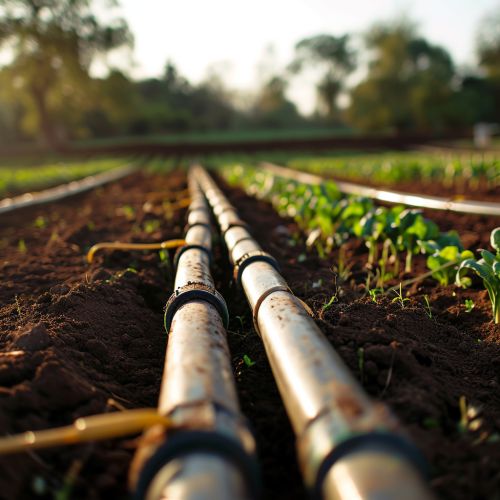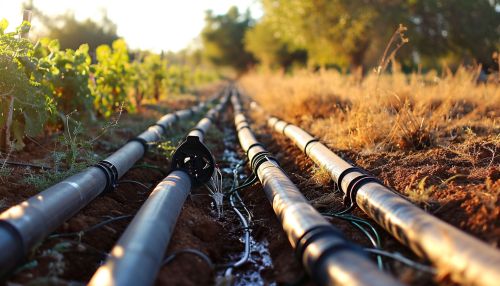Sub-surface drip irrigation
Introduction
Sub-surface drip irrigation (SDI) is a type of irrigation method that delivers water directly to the root zone of plants. This method of irrigation is highly efficient and conserves water by minimizing evaporation and runoff. The SDI system is comprised of a network of tubes or drip tapes, emitters, and filters. The water is distributed through these tubes and released directly into the soil at the root level through emitters. This method of irrigation is particularly beneficial in areas with water scarcity or in crops that require precise water management.


History and Development
The concept of sub-surface drip irrigation dates back to the ancient civilizations of Persia and China, where clay pipes were used to irrigate crops. However, the modern form of SDI was developed in the 1960s in Israel, where water scarcity was a significant issue. The development of plastic emitters and drip tapes made SDI a practical and efficient method of irrigation. Over the years, advancements in technology have led to the development of more efficient and durable systems, making SDI a popular choice for irrigation in various parts of the world.
Components of SDI System
A typical SDI system consists of several components, each playing a crucial role in the efficient functioning of the system.
Water Source
The water source for an SDI system can be a well, pond, river, or municipal water supply. The quality of water is crucial as it can affect the performance of the system. Water with high levels of minerals or organic matter can clog the emitters, reducing the efficiency of the system.
Pump and Filtration System
The pump is used to pressurize the water and push it through the system. The filtration system is used to remove any particles or debris from the water that could potentially clog the emitters. There are different types of filters used in SDI systems, including screen filters, disc filters, and sand filters.
Drip Tubes and Emitters
The drip tubes or drip tapes are the main components of the SDI system. They are buried beneath the soil surface and distribute the water to the plants. The emitters are small devices attached to the drip tubes that release the water into the soil. The flow rate of the emitters can be adjusted to control the amount of water delivered to the plants.
Control and Monitoring Devices
Control and monitoring devices are used to manage the operation of the SDI system. These include timers, pressure regulators, flow meters, and moisture sensors. These devices help to optimize the use of water and ensure the system is functioning correctly.
Benefits of SDI
Sub-surface drip irrigation offers several benefits over traditional irrigation methods.
Water Conservation
SDI is highly efficient in water use. By delivering water directly to the root zone, it minimizes evaporation and runoff, conserving water. This is particularly beneficial in areas with water scarcity.
Increased Crop Yield
SDI provides precise water management, which can lead to increased crop yield. By delivering the right amount of water directly to the root zone, it promotes optimal plant growth.
Reduced Weed Growth
Since water is delivered directly to the root zone of the crops, there is less surface moisture, which can reduce weed growth. This can save time and resources in weed management.
Flexibility
SDI systems can be customized to suit the specific needs of different crops and soil types. This makes it a flexible and adaptable method of irrigation.
Limitations and Challenges
Despite its benefits, SDI also has some limitations and challenges.
Initial Cost
The initial cost of installing an SDI system can be high. However, the long-term benefits of water conservation and increased crop yield can offset this cost.
Maintenance
SDI systems require regular maintenance to ensure they are functioning correctly. This includes checking and cleaning the filters and monitoring the system for any leaks or clogs.
Rodent Damage
Rodents can cause damage to the drip tubes, leading to leaks and reduced system efficiency. This requires regular monitoring and control measures.
Salinity Issues
In areas with high soil salinity, the use of SDI can lead to the accumulation of salts in the root zone, which can affect plant growth.
Future of SDI
With the increasing need for water conservation and efficient irrigation methods, the use of sub-surface drip irrigation is expected to grow in the future. Advances in technology, such as the development of more efficient emitters and control devices, will further enhance the effectiveness of SDI. Additionally, the integration of SDI with smart farming technologies, such as remote sensing and precision agriculture, will provide more precise and efficient water management.
